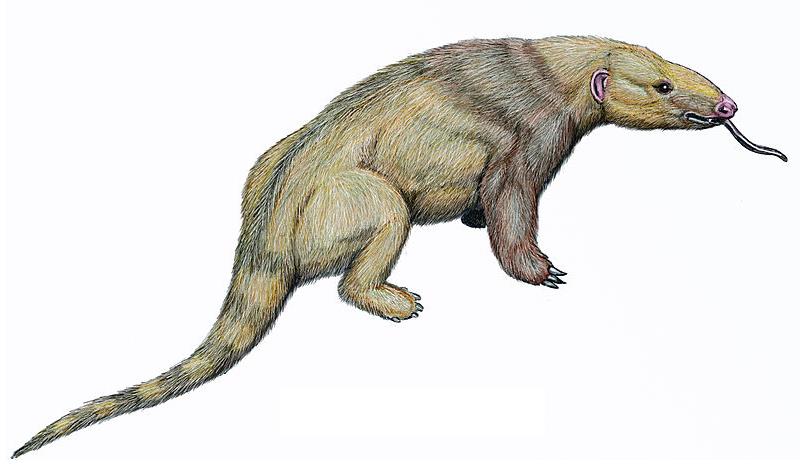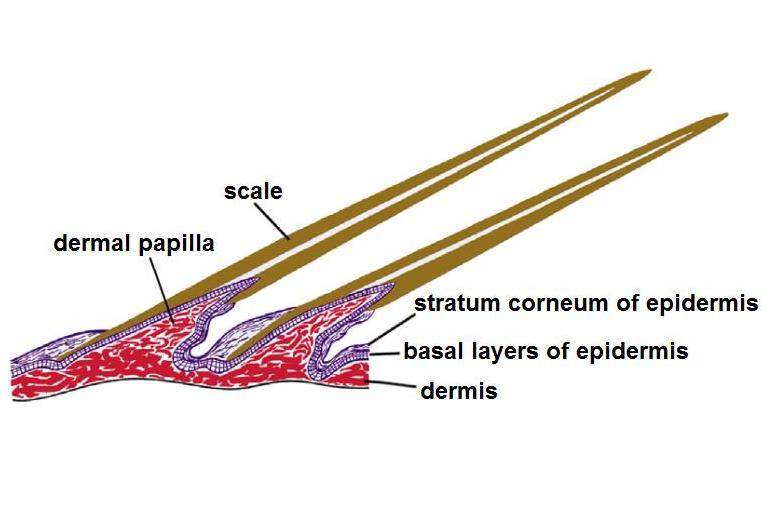|
Eurotamandua
''Eurotamandua'' ("european ''Tamandua''") is an extinct genus of mammal from extinct family Eurotamanduidae that lived during the middle Eocene. A single fossil is known, coming from the Messel Pit in southwestern Germany. ''Eurotamandua'' was about long. Most palaeontologists now classify ''Eurotamandua'' as a pangolin. When its fossils were first discovered, ''Eurotamandua'' was originally thought to be an anteater, as it lacked the characteristic fused-hair scales of other pangolins. ''Eurotamandua'' placement within the pangolins was made primarily because of a lack of the characteristic "xenarthran" joints found in all xenarthrans, including tamanduas. There is still much ambiguity in the taxonomy of all mammals prior to the Eocene, so there is the possibility that ''Eurotamandua'' was a primitive xenarthran. However, this is highly unlikely because all known fossil evidence indicates that xenarthrans existed exclusively in South America from the beginning of the Cenozoic ... [...More Info...] [...Related Items...] OR: [Wikipedia] [Google] [Baidu] |
Eomanis
''Eomanis'' ("dawn pangolin") is the earliest known true (and scaled) pangolin from extinct family Eomanidae (and extinct superfamily Eomanoidea) within suborder Eupholidota. It lived during the Eocene in Europe. ''Eomanis'' fossils found in the Messel Pit in Germany are very similar in size and anatomy to living pangolins of the genus ''Manis'', indicating that pangolins have remained largely unchanged in morphology and behavior for 50 million years. However, unlike modern pangolins, its tail and legs did not bear scales. According to the stomach contents of the excellently preserved Messel specimens, ''Eomanis’'' diet consisted of both insects and plants. Another early mammal discovered in the Messel Pit that was similar in anatomy and likely also had an insectivorous diet was '' Eurotamandua''. Despite its name, ''Eurotamandua'' was almost certainly not a xenarthran because it lacked the characteristic xenarthran joints present in all living and extinct xenarthrans. In add ... [...More Info...] [...Related Items...] OR: [Wikipedia] [Google] [Baidu] |
Pholidotamorpha
Pholidotamorpha ("pangolin-like forms") is a clade of placental, mostly ant- and termite-eating mammals that (partially) physically resemble anteaters and armadillos. However, those aforementioned species are now placed in the order Xenarthra, along with sloths; Pholidotamorpha is now classified under the mirorder Ferae, which includes the order Carnivora (carnivorous mammals) and the pangolins (Pholidota) as well as the prehistoric order Palaeanodonta, containing only extinct species. Classification and phylogeny History of taxonomy Both the Pholidota and Palaeanodonta orders were formerly placed with other orders of ant-eating mammals, most notably Xenarthra (armadillos, sloths, anteaters, which they superficially resemble); some palaeontologists, throughout the history of zoology, have placed pangolins and palaeanodonts as a suborder, Pholidota, in the greater order Cimolesta, alongside the extinct family Ernanodontidae as a separate suborder Ernanodonta near it. Ho ... [...More Info...] [...Related Items...] OR: [Wikipedia] [Google] [Baidu] |
Pangolin
Pangolins, sometimes known as scaly anteaters, are mammals of the order Pholidota (). The one extant family, the Manidae, has three genera: '' Manis'', '' Phataginus'', and '' Smutsia''. ''Manis'' comprises four species found in Asia, while ''Phataginus'' and ''Smutsia'' include two species each, all found in sub-Saharan Africa. These species range in size from . Several extinct pangolin species are also known. In September 2023, nine species were reported. Pangolins have large, protective keratin scales, similar in material to fingernails and toenails, covering their skin; they are the only known mammals with this feature. Depending on the species, they live in hollow trees or burrows. Pangolins are nocturnal, and their diet consists of mainly ants and termites, which they capture using their long tongues. They tend to be solitary animals, meeting only to mate and produce a litter of one to three offspring, which they raise for about two years. Pangolins superficially resemb ... [...More Info...] [...Related Items...] OR: [Wikipedia] [Google] [Baidu] |
Necromanis
''Necromanis'' ("extinct pangolin") is an extinct genus of pangolin from superfamily Manoidea. It lived from the middle Oligocene to middle Miocene in Europe. It was originally placed within family Manidae, but was eventually removed from it as more fossil pholidotids from outside that family were found and studied more extensively (i.e., with the discovery and study of ''Eomanis'' and ''Patriomanis'').Gaudin, Timothy J., Robert J. Emry, and Brandon Pogue. "A new genus and species of pangolin (Mammalia, Pholidota) from the late Eocene of Inner Mongolia, China." Journal of Vertebrate Paleontology 26.1 (2006): 146-159. Currently, ''Necromanis'' is placed as ''incertae sedis'' within the pholidotid superfamily Manoidea, together with the families Manidae and Patriomanidae. ''N. quercyi'' was originally placed within ''Teutomanis'' by Ameghino in 1905, but was later subsumed into ''Necromanis''. A new fossil humerus attributed to ''N. franconica'' from Quercy, France lead researchers ... [...More Info...] [...Related Items...] OR: [Wikipedia] [Google] [Baidu] |
Afrotheria
Afrotheria ( from Latin ''Afro-'' "of Africa" + ''theria'' "wild beast") is a superorder of placental mammals, the living members of which belong to groups that are either currently living in Africa or of African origin: golden moles, elephant shrews (also known as sengis), otter shrews, tenrecs, aardvarks, hyraxes, elephants, sea cows, and several extinct clades. Most groups of afrotheres share little or no superficial resemblance, and their similarities have only become known in recent times due to genetics and molecular studies. Many afrothere groups are found mostly or exclusively in Africa, reflecting the fact that Africa was an island continent from the Cretaceous until the early Miocene around 20 million years ago, when Afro-Arabia collided with Eurasia. Because Africa was isolated by water, Laurasian groups of mammals such as insectivores, rodents, lagomorphs, carnivorans and ungulates could not reach Africa for much of the early to mid-Cenozoic. Instead, the ... [...More Info...] [...Related Items...] OR: [Wikipedia] [Google] [Baidu] |
Xenarthra
Xenarthra (; from Ancient Greek ξένος, xénos, "foreign, alien" + ἄρθρον, árthron, "joint") is a superorder and major clade of placental mammals native to the Americas. There are 31 living species: the anteaters, tree sloths, and armadillos. Extinct xenarthrans include the glyptodonts, pampatheres and ground sloths. Xenarthrans originated in South America during the late Paleocene about 60 million years ago. They evolved and diversified extensively in South America during the continent's long period of isolation in the early to mid Cenozoic Era. They spread to the Antilles by the early Miocene and, starting about 3 million years ago, spread to Central and North America as part of the Great American Interchange. Nearly all of the formerly abundant megafaunal xenarthrans became extinct at the end of the Pleistocene. Characteristics Xenarthrans share several characteristics that are not present in other placental mammals, which suggest that xenarthrans desce ... [...More Info...] [...Related Items...] OR: [Wikipedia] [Google] [Baidu] |
Euromanis
''Euromanis'' ("european pangolin") is one of the earliest known pangolin genera. It lived during the middle Eocene in Europe. ''Euromanis'' fossils found in the Messel Pit in Germany. Unlike modern pangolins, it did not bear scales on its body. Phylogeny Phylogenetic position of genus ''Euromanis'' within order Pholidota. See also * Mammal classification * Pangolin Pangolins, sometimes known as scaly anteaters, are mammals of the order Pholidota (). The one extant family, the Manidae, has three genera: '' Manis'', '' Phataginus'', and '' Smutsia''. ''Manis'' comprises four species found in Asia, while ' ... References Prehistoric pangolins Eocene mammals Myrmecophagous mammals Prehistoric placental genera Cenozoic mammals of Europe Fossil taxa described in 1994 {{paleo-mammal-stub ... [...More Info...] [...Related Items...] OR: [Wikipedia] [Google] [Baidu] |
Eupholidota
Eupholidota ("true pangolins") is a suborder of pangolins that includes two superfamilies: extant Manoidea and extinct Eomanoidea. Taxonomy * Suborder: Eupholidota (true pangolins) ** Superfamily: Manoidea (pangolins) *** Family: Manidae (pangolins) *** Family: †Patriomanidae *** ''Incertae sedis'' **** Genus: †''Necromanis'' ** Superfamily: † Eomanoidea *** Family: † Eomanidae Phylogeny Phylogenetic position of suborder Eupholidota within order Pholidota. See also * Mammal classification * Pangolin Pangolins, sometimes known as scaly anteaters, are mammals of the order Pholidota (). The one extant family, the Manidae, has three genera: '' Manis'', '' Phataginus'', and '' Smutsia''. ''Manis'' comprises four species found in Asia, while ' ... References Pangolins {{mammal-stub ... [...More Info...] [...Related Items...] OR: [Wikipedia] [Google] [Baidu] |
Messel Pit
The Messel Formation is a Formation (geology), geologic formation in Hesse, central Germany, dating back to the Eocene Epoch (geology), epoch (about 47 Ma). Its geographic range is restricted to the Messel pit. There it unconformably overlies crystalline Variscan basement and its Permian cover (Rotliegend) as well as Eocene volcanic breccias derived from the basement rocks. The formation mainly comprises lacustrine laminated bituminous shale (‘oil shale’) renowned for its content of fossils in exceptional preservation, particularly plants, arthropods and vertebrates (e.g. ''Darwinius masillae''). Messel pit The Messel pit () is a disused quarry near the village of Messel (Landkreis Darmstadt-Dieburg, Hesse) about southeast of Frankfurt am Main, Germany. Bituminous shale was mined there. Because of its abundance of well-preserved fossils of the Messel Formation dating from the middle of the Eocene, it has significant geological and scientific importance. Over 1400 taxa o ... [...More Info...] [...Related Items...] OR: [Wikipedia] [Google] [Baidu] |
Pangolin
Pangolins, sometimes known as scaly anteaters, are mammals of the order Pholidota (). The one extant family, the Manidae, has three genera: '' Manis'', '' Phataginus'', and '' Smutsia''. ''Manis'' comprises four species found in Asia, while ''Phataginus'' and ''Smutsia'' include two species each, all found in sub-Saharan Africa. These species range in size from . Several extinct pangolin species are also known. In September 2023, nine species were reported. Pangolins have large, protective keratin scales, similar in material to fingernails and toenails, covering their skin; they are the only known mammals with this feature. Depending on the species, they live in hollow trees or burrows. Pangolins are nocturnal, and their diet consists of mainly ants and termites, which they capture using their long tongues. They tend to be solitary animals, meeting only to mate and produce a litter of one to three offspring, which they raise for about two years. Pangolins superficially resemb ... [...More Info...] [...Related Items...] OR: [Wikipedia] [Google] [Baidu] |
Pholidota Sp
Pangolins, sometimes known as scaly anteaters, are mammals of the order Pholidota (). The one extant family, the Manidae, has three genera: ''Manis'', ''Phataginus'', and ''Smutsia''. ''Manis'' comprises four species found in Asia, while ''Phataginus'' and ''Smutsia'' include two species each, all found in sub-Saharan Africa. These species range in size from . Several extinct pangolin species are also known. In September 2023, nine species were reported. Pangolins have large, protective keratin scales, similar in material to fingernails and toenails, covering their skin; they are the only known mammals with this feature. Depending on the species, they live in hollow trees or burrows. Pangolins are nocturnal, and their diet consists of mainly ants and termites, which they capture using their long tongues. They tend to be solitary animals, meeting only to mate and produce a litter of one to three offspring, which they raise for about two years. Pangolins superficially resemble ar ... [...More Info...] [...Related Items...] OR: [Wikipedia] [Google] [Baidu] |



